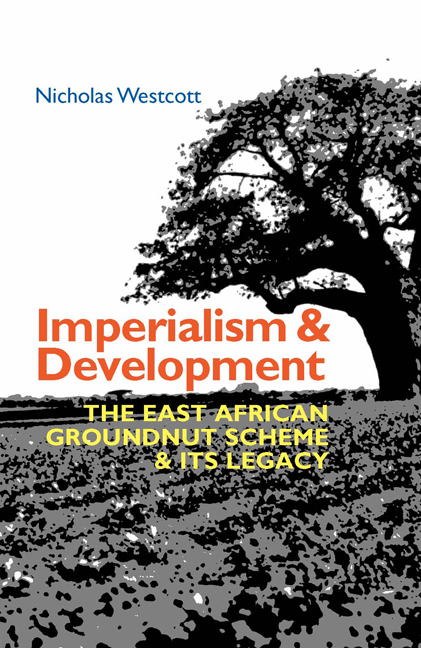Book contents
- Frontmatter
- Dedication
- Contents
- List of Illustrations
- List of Abbreviations
- Miscellaneous Frontmatter
- Preface and Acknowledgements
- Map
- Introduction
- 1 Austerity
- 2 A Scheme is Born
- 3 ‘The Poison of the Official Pen…’
- 4 The Groundnut Army
- 5 Beating about the Bush
- 6 The Overseas Food Corporation
- 7 1949: The Crisis
- 8 The Last Chance
- 9 A Sudden Death
- 10 Legacy and Lessons
- Bibliography
- Index
- Eastern African Studies
- Frontmatter
- Dedication
- Contents
- List of Illustrations
- List of Abbreviations
- Miscellaneous Frontmatter
- Preface and Acknowledgements
- Map
- Introduction
- 1 Austerity
- 2 A Scheme is Born
- 3 ‘The Poison of the Official Pen…’
- 4 The Groundnut Army
- 5 Beating about the Bush
- 6 The Overseas Food Corporation
- 7 1949: The Crisis
- 8 The Last Chance
- 9 A Sudden Death
- 10 Legacy and Lessons
- Bibliography
- Index
- Eastern African Studies
Summary
It all began with a man called Miller.
Miller
Ralph W.R. Miller was the Director of Agriculture in Tanganyika. He was an effervescent man, as strong on ideas as he was weak in judgement. The Colonial Office considered that he was ‘temperamentally … rather volatile and needed to be kept in check.’ But at least he was energetic, something the territory needed badly at this time.
Tanganyika Territory was big. From Mount Kilimanjaro in the north to the Southern Highlands on the border with Northern Rhodesia (now Zambia) in the south, and from the Indian Ocean in the east to Lakes Tanganyika and Victoria in the west, it is nearly a million square kilometres (366,000 square miles), nearly twice the size of California or Spain. In 1946 its population was estimated at around 6 million people, overwhelmingly subsistence farmers, scattered across the land but concentrated mainly in the well-watered coastal and highland areas around the country's periphery. The drier interior was more lightly populated, much of it having never recovered from the devastating rinderpest epidemic that killed off most of the cattle in the 1890s and allowed the tsetse fly, which effectively prevented cattle herding, to re-infest the bush.
The Second World War had transformed Tanganyika Territory from a sleepy colonial backwater, starved of funds, staff and attention during the 1930s, into a vital imperial asset, its resources mobilised to the full in the cause of total war. Once the eastern empire had fallen to the Japanese in 1942, every last resource available from Africa was needed for the war effort. In Tanganyika's case, these resources were primarily agricultural, and yet, to support agricultural production, Miller had an Agricultural Department denuded of staff by the Depression and war, and a budget of just £150,000 from a total Tanganyika budget of around £5 million.
Tanganyika's most vital strategic commodity was sisal, a spiky, fibrous plant used to produce naval ropes and binder twine for harvesting in the days before synthetic fibres took over. It was grown on large estates, concentrated in the eastern half of the country, and depended on thousands of migrant workers from the poorer areas to the west and south to undertake the harvesting (by hand) and processing of the fibre.
- Type
- Chapter
- Information
- Imperialism and DevelopmentThe East African Groundnut Scheme and its Legacy, pp. 37 - 55Publisher: Boydell & BrewerPrint publication year: 2020



